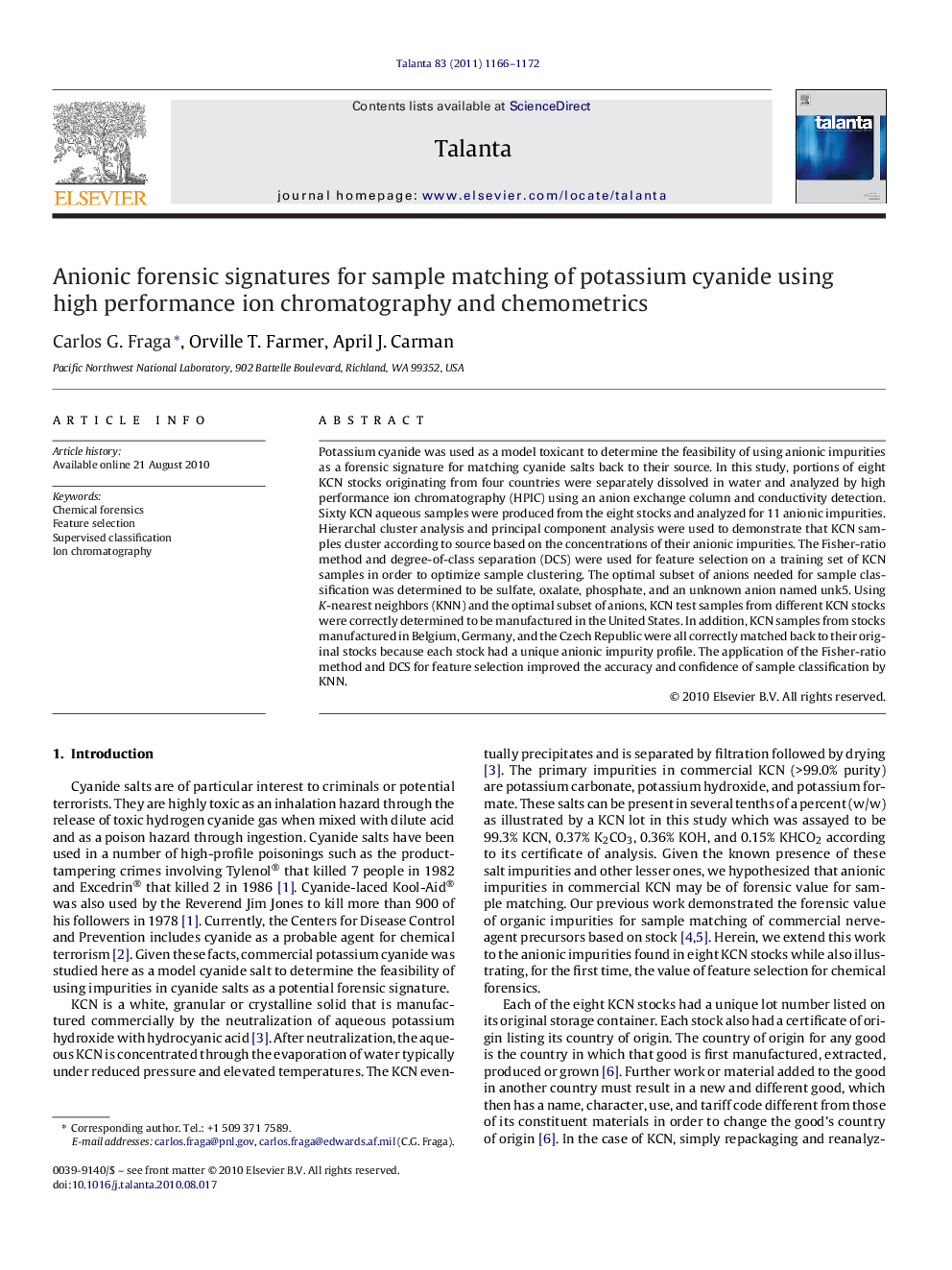| Article ID | Journal | Published Year | Pages | File Type |
|---|---|---|---|---|
| 10560678 | Talanta | 2011 | 7 Pages |
Abstract
Potassium cyanide was used as a model toxicant to determine the feasibility of using anionic impurities as a forensic signature for matching cyanide salts back to their source. In this study, portions of eight KCN stocks originating from four countries were separately dissolved in water and analyzed by high performance ion chromatography (HPIC) using an anion exchange column and conductivity detection. Sixty KCN aqueous samples were produced from the eight stocks and analyzed for 11 anionic impurities. Hierarchal cluster analysis and principal component analysis were used to demonstrate that KCN samples cluster according to source based on the concentrations of their anionic impurities. The Fisher-ratio method and degree-of-class separation (DCS) were used for feature selection on a training set of KCN samples in order to optimize sample clustering. The optimal subset of anions needed for sample classification was determined to be sulfate, oxalate, phosphate, and an unknown anion named unk5. Using K-nearest neighbors (KNN) and the optimal subset of anions, KCN test samples from different KCN stocks were correctly determined to be manufactured in the United States. In addition, KCN samples from stocks manufactured in Belgium, Germany, and the Czech Republic were all correctly matched back to their original stocks because each stock had a unique anionic impurity profile. The application of the Fisher-ratio method and DCS for feature selection improved the accuracy and confidence of sample classification by KNN.
Related Topics
Physical Sciences and Engineering
Chemistry
Analytical Chemistry
Authors
Carlos G. Fraga, Orville T. Farmer, April J. Carman,
